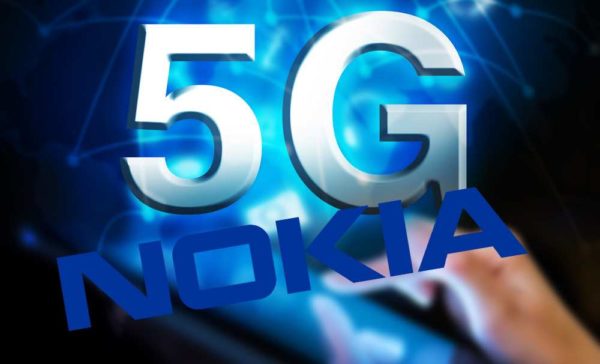By Dr. Muneer Zuhdi
Enterprises were taken by surprise by the outbreak of the COVID-19 pandemic and its subsequent impact on their business in 2020. As they continue their effort to survive the pandemic and thrive in the post-COVID era, they are expected to prioritize and accelerate their ICT spending, and 5G will be a crucial part of it.
Enterprises in physical industries have been lagging in terms of ICT spending in comparison with digital industries. However, this is expected to change. A recent Nokia Bell Labs Consulting study predicts that we will witness a “Big Inversion” in the ratio of ICT spending between physical and digital industries in the post-COVID era. The main driver goes beyond profitability and growth to cover the sustainability of the enterprises in the physical industries. The ICT investments will target a broad spectrum of technologies, collectively termed as 5G+, where 5G is the foundation that enables multiple key technologies such as cloud, Internet of Things (IoT), and Artificial Intelligence (AI)/Machine Learning (ML).
Leveraging 5G To Accelerate Growth In Post-COVID Era
The initial rollout of 5G networks has mainly targeted consumers, but this is expected to shift towards targeting industrial zones and enterprises to enable the digitization of their operations. Globally, governments are also likely to release more spectrum in recognition of the importance of 5G as a crucial enabler for industrial automation.
5G is the nervous system of the new digital fabric that will be transforming enterprises and industries. It will be the underlying infrastructure that will enable an ecosystem of related technologies to unlock significant value for enterprises. The value will come in terms of enhanced safety, productivity, and efficiency.
Nokia Bell Labs Consulting estimates that investments in 5G+ technologies will increase the global GDP by up to $8 trillion by 2030. A significant part of this will come from the digital transformation of the physical industries, such as utilities, mining, ports, and manufacturing. Since 5G has been built to support both humans and machines, it enables these industries to meet their strict requirements for throughput, latency, and reliability to support their mission-critical applications.
Growing Relevance of Private Networks
Private networks will play a key role in the digital transformation of the physical industries. Industry 4.0 is already being powered by private wireless networks with carrier-grade 4G that will migrate to 5G to satisfy the different enterprise use case requirements for industries. Latency as low as 1 millisecond, 6X9 reliability, and throughput in excess of 1Gbps will all be critical enablers for heavy machinery teleoperation, collaborative robots (Cobots), and Automated Guided Vehicles (AGVs). This will encourage industries to accelerate the adoption of private 5G networks. The 5G global sites for industries are expected to be double the worldwide number of 5G macro base stations, according to Harbor Research.
When deploying a private network in an industrial zone, it’s crucial to have a vision of how it will need to be digitally transformed and what use cases need to be enabled by the private network. This will drive the network architecture requirements in terms of utilizing network slices to address the different requirements between use cases such as video analytics, teleoperation, and environmental sensing.
Such use cases can have optimized end-to-end delivery with guaranteed throughput, latency, reliability, and security. Edge cloud might also be critical in reducing the latency for robots and autonomous vehicles. Data analytics and necessary action can all be performed at the edge of the network while keeping the data on-premise.
Private networks provide enterprises with mission-critical reliability, ubiquitous connectivity, and scalability to support the growing needs of the enterprise.
The Question of Security
Since 5G is designed for humans and machines, it is expected to support several mission-critical applications across segments such as energy, transportation, and smart cities. Therefore, security cannot be an afterthought when the network is expected to be utilized in such vital industries. This requires built-in security by design and active monitoring to detect and mitigate threats. The 5G cybersecurity also requires an end-to-end optimization from the devices and access sites to the cloud edge and network core. The approach is both predictive and automated. It leverages the usage of machine learning and multi-dimensional analytics and intelligence for a rapid response to cybersecurity threats.
The rapid response is achieved through automated workflows after an anomaly is detected to suggest a fix for the detected threat. Finally, it’s crucial to perform a security assessment to help identify the gaps between the existing security capabilities and the 5G security requirements. This helps guide the investment decision on technologies and skillsets to meet the 5G security challenges.
As the world continues to battle its way out of the COVID-19 pandemic, enterprises, both physical and digital, must build resilience in their operations. 5G+ powered digital transformation is key to enhancing safety, productivity, and efficiency of enterprises while building resiliency and sustainability into their operation.
































